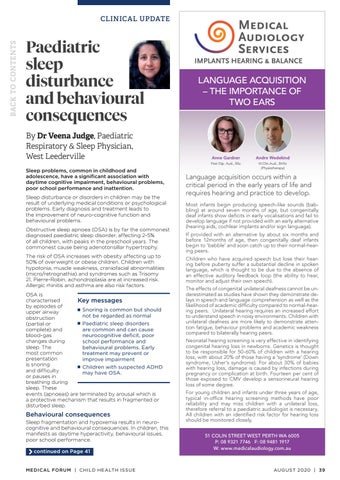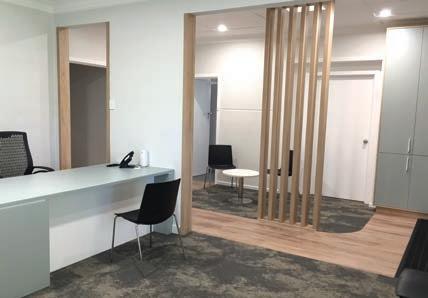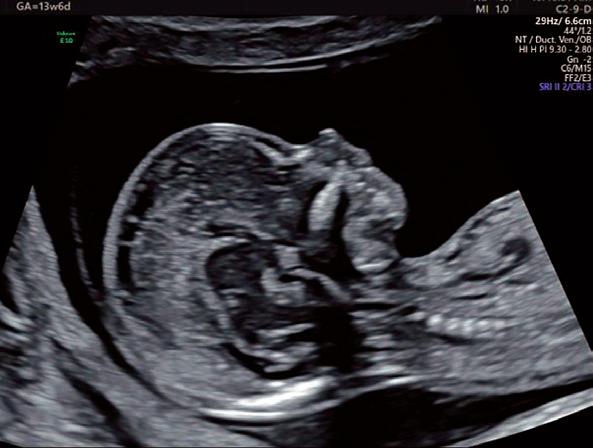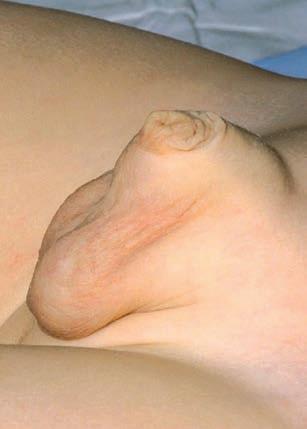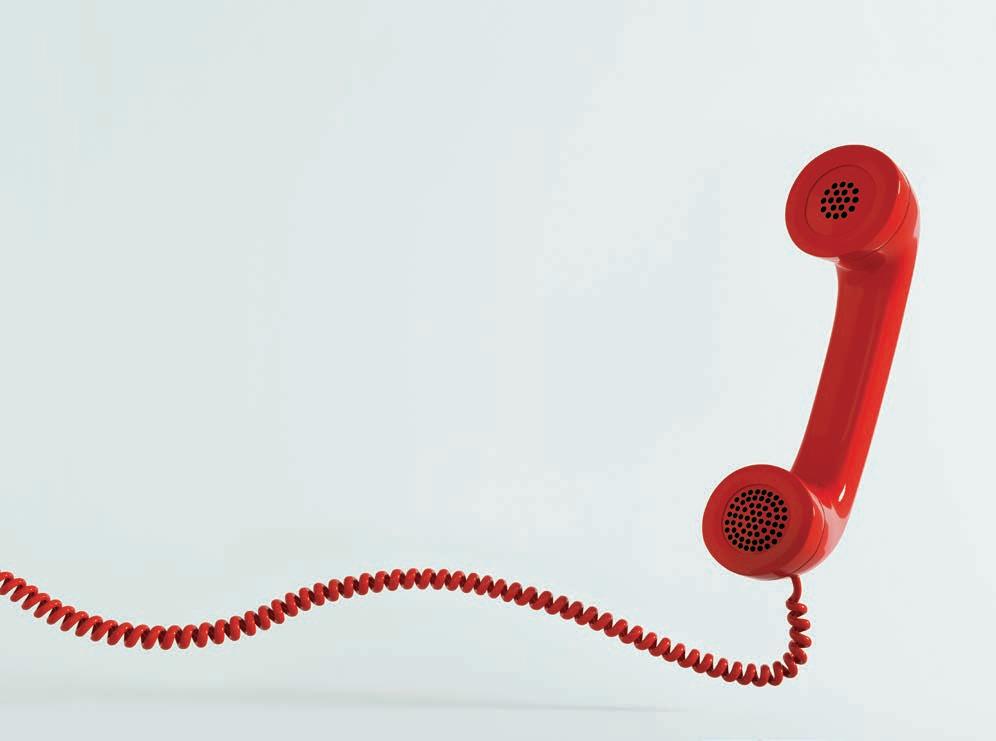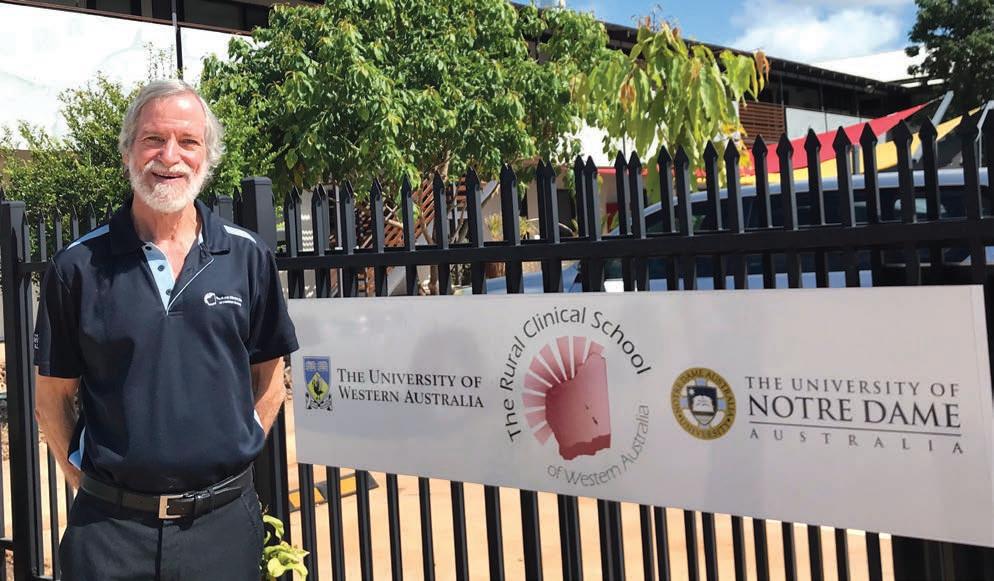BACK TO CONTENTS
CLINICAL UPDATE
Paediatric sleep disturbance and behavioural consequences By Dr Veena Judge, Paediatric Respiratory & Sleep Physician, West Leederville Sleep problems, common in childhood and adolescence, have a significant association with daytime cognitive impairment, behavioural problems, poor school performance and inattention. Sleep disturbance or disorders in children may be the result of underlying medical conditions or psychological problems. Early diagnosis and treatment leads to the improvement of neuro-cognitive function and behavioural problems. Obstructive sleep apnoea (OSA) is by far the commonest diagnosed paediatric sleep disorder, affecting 2-5% of all children, with peaks in the preschool years. The commonest cause being adenotonsillar hypertrophy. The risk of OSA increases with obesity affecting up to 50% of overweight or obese children. Children with hypotonia, muscle weakness, craniofacial abnormalities (micro/retrognathia) and syndromes such as Trisomy 21, Pierre-Robin, achondroplasia are at increased risk. Allergic rhinitis and asthma are also risk factors. OSA is characterised Key messages by episodes of Snoring is common but should upper airway not be regarded as normal obstruction Paediatric sleep disorders (partial or are common and can cause complete) and neurocognitive deficit, poor blood-gas changes during school performance and sleep. The behavioural problems. Early most common treatment may prevent or presentation improve impairment is snoring Children with suspected ADHD and difficulty may have OSA. or pauses in breathing during sleep. These events (apnoeas) are terminated by arousal which is a protective mechanism that results in fragmented or disturbed sleep.
Behavioural consequences Sleep fragmentation and hypoxemia results in neurocognitive and behavioural consequences. In children, this manifests as daytime hyperactivity, behavioural issues, poor school performance. continued on Page 41
MEDICAL FORUM | CHILD HEALTH ISSUE
LANGUAGE ACQUISITION – THE IMPORTANCE OF TWO EARS
Anne Gardner
Andre Wedekind
Post Dip. Aud., BSc
M.Clin.Aud., BHSc (Physiotherapy)
Language acquisition occurs within a critical period in the early years of life and requires hearing and practice to develop. Most infants begin producing speech-like sounds (babbling) at around seven months of age, but congenitally deaf infants show deficits in early vocalisations and fail to develop language if not provided with an early alternative (hearing aids, cochlear implants and/or sign language). If provided with an alternative by about six months and before 12months of age, then congenitally deaf infants begin to ‘babble’ and soon catch up to their normal-hearing peers. Children who have acquired speech but lose their hearing before puberty suffer a substantial decline in spoken language, which is thought to be due to the absence of an effective auditory feedback loop (the ability to hear, monitor and adjust their own speech). The effects of congenital unilateral deafness cannot be underestimated as studies have shown they demonstrate delays in speech and language comprehension as well as the likelihood of academic difficulty compared to normal-hearing peers. Unilateral hearing requires an increased effort to understand speech in noisy environments. Children with unilateral deafness are more likely to demonstrate attention fatigue, behaviour problems and academic weakness compared to bilaterally hearing peers. Neonatal hearing screening is very effective in identifying congenital hearing loss in newborns. Genetics is thought to be responsible for 50-60% of children with a hearing loss, with about 20% of those having a ‘syndrome’ (Down syndrome, Usher’s syndrome). For about 30% of babies with hearing loss, damage is caused by infections during pregnancy or complication at birth. Fourteen per cent of those exposed to CMV develop a sensorineural hearing loss of some degree. For young children and infants under three years of age, typical in-office hearing screening methods have poor reliability and may miss children with a unilateral loss, therefore referral to a paediatric audiologist is necessary. All children with an identified risk factor for hearing loss should be monitored closely. 51 COLIN STREET WEST PERTH WA 6005 P: 08 9321 7746 F: 08 9481 1917 W: www.medicalaudiology.com.au
AUGUST 2020 | 39
